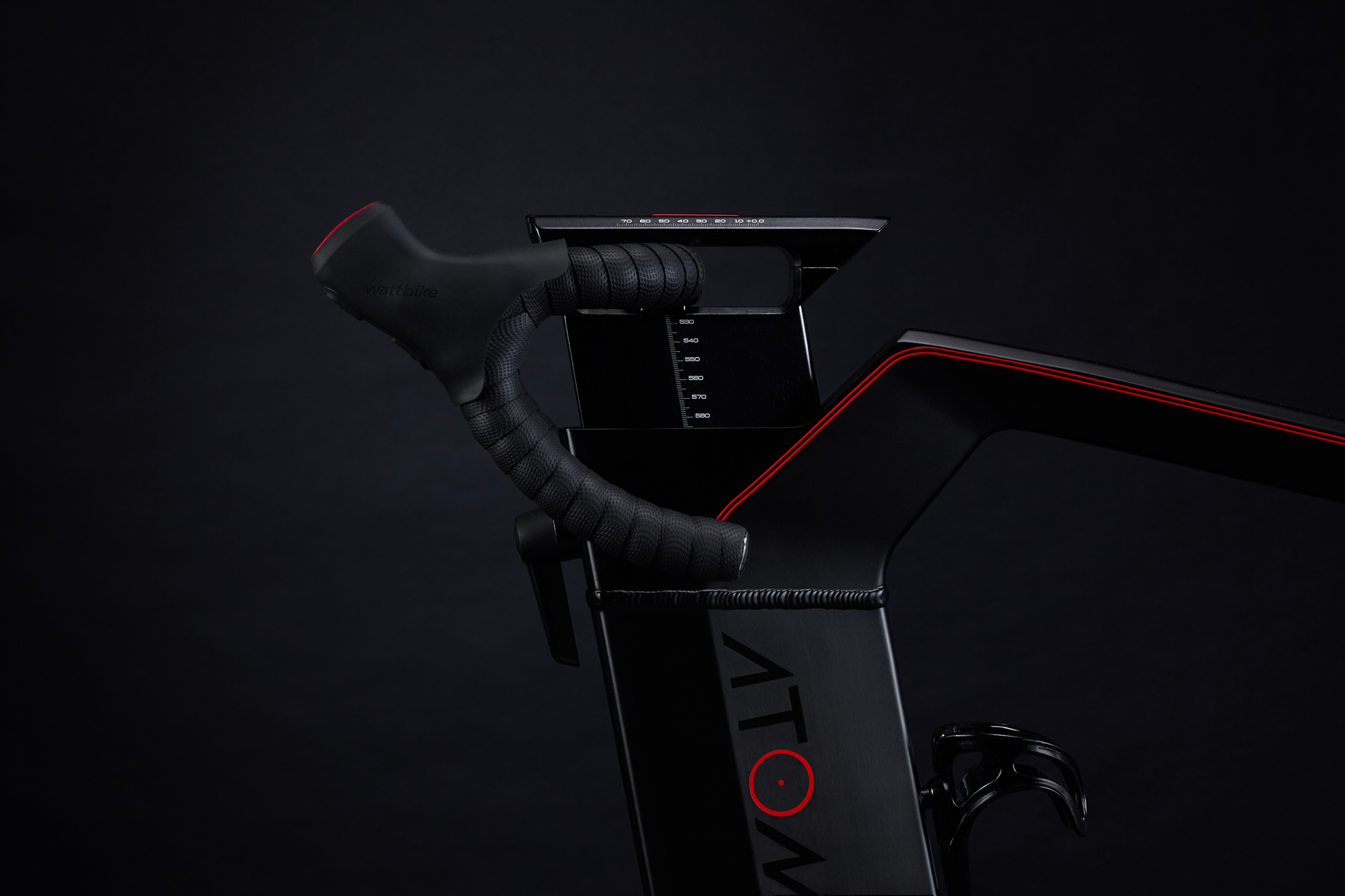Wattbike Atom Next Generation review
We gave the original Wattbike Atom full marks – and now the Next Generation version with its upgraded resistance system is even better

At £1,999 the Wattbike Atom Next Generation isn’t cheap, but does weigh in with a friendlier price tag than both Wahoo and Tacx’s dedicated smart bikes. This is a refinement of an already superb product. It’s a heavy trainer that needs assigning to a room, garage or shed, but it’s small enough to sit unobtrusively in a corner while not in use. Having already given the original Atom full marks out of 10 in 2018, unfortunately I can’t score the Next Gen an 11/10, but I would if I could...
-
+
Smoother, faster resistance changes
-
+
Better sweat protection
-
+
Quiet
-
-
Would be nice to get a 'click' for a gear change
You can trust Cycling Weekly.
We tried, tested and gave the original Wattbike Atom a grilling to within an inch of its life back in 2018, and it didn’t fold under questioning, earning full marks out of 10 and only causing the slightest of eyebrow raises due to a slight delay in gear transition – which in no way affected the riding or racing experience. It was quiet, smooth and pedalled to perfection, aping an outside ride with uncanny accuracy.
So when we heard that the Atom was getting an upgrade which was billed to improve the performance, our interest was officially piqued.
But is the new model, or 'Next Generation' a worthy heir to its predecessor?
We slung a leg over the Wattbike Atom Next Generation, which costs £400 more than the original Atom, to see if we were gifted any more bang for our buck.
With alternative options coming on to the market all the time, it's worth checking out other models of the best exercise bikes and smart indoor bikes to see how the Wattbike Atom Next Generation compares.
Wattbike Atom Next Generation: construction
Extrinsically there’s very little separating the two Atoms – dimensions and weight are the same, it still ships solely in that slick black and red colourway and the handlebar still comprises the tri-style bar/device holder set-up.
The latest race content, interviews, features, reviews and expert buying guides, direct to your inbox!
The solid 44kg unit is fairly easily moved around using the provided coasters, and saddle height and position and stem length are easily adjusted by quick release levers or Allen keys. Again, crank length cannot be adjusted, with 170mm being the Atom’s default measurement. Happily, however, both the power inlet and power switch have been positioned out of harm’s (and sweat’s) way, on the underside of the machine, whereas they sat with some vulnerability at the back of the old model.

So far, so familiar. The similarities don’t stop there, either. When the Next Gen is connected to a device, be it an iPad, computer or smart TV (any of which effectively serve as a head unit), you’ll notice the same range of 22 gears is present… but digging a little deeper, it’s the way in which transitions are made that have earned this new model pride and place as the poster boy for Wattbike’s catalogue of indoor trainers.
Indeed, where the original Wattbike Atom was specced with a mechanically-driven resistance unit, perhaps introducing a lack of pedalling fluidity as well as gear-transition and gradient-mimicking lag, the Wattbike Atom Next Generation now gets an electromagnetic resistance unit, which is ultimately the only reason that Wattbike has introduced this new model on the market. Some may argue the new Atom has merely caught up the Tackx and Wahoo smart bikes in this regard, but Wattbike has said that its electromagnetic system is a proprietary design, offering a unique indoor riding experience.
>>> Best turbo trainers: smart and standard indoor trainers reviewed
So with the back cover blurb indicating smooth gear changes and a fluid ride over any virtual terrain, I set the Next Gen up in my shed – which is happily an idiotproof process – and took it on a test spin on Zwift’s most undulating course: Douce France.
The ride
Firstly, I couldn’t quite believe how quiet this thing was – admittedly I’d pulled down the pants of its mechanically-operated sibling and given it a metaphorical thrashing, but I don’t think it had ever sounded this clean, at any stage. However, upon consulting the user manual, the 70 decibels the Wattbike Atom Next Generation emits at 200 watts is exactly the same as the previous model, so no change and perhaps a cautionary point to myself to break out the WD40 more often.

A few simple geometry tweaks, extending the reach and changing the saddle height so I was in a position to stamp out optimal watts, I began the course in Zone 2, which equated to the same power window as on the first Atom, and moving through tempo to threshold these too married up. So power accuracy, compared to the another Wattbike product at least, appears to be good.
The real test was just around the corner though. A couple of kilometres into the 'Douce France' course on Zwift, the parcours begins to resemble what can best be described as an industrially-sized mountain biking pump track. The road rolls and rolls for kilometres on end, and only the best smart trainers will be able to accommodate these dramatic and quick changes in gradient in anything like a real-world fashion. The fact that this was an unremarkable experience on the Next Gen could perhaps be construed as a criticism, but I think this is the highest compliment that can be given to a smart trainer. That the Next Gen negotiated Douce France’s rollers in such a nonchalant manner speaks volumes about how efficiently the electromagnetic system works – changes in gradient, even by a single per cent, were felt in real time, with no jarring or the machine playing catch-up on steeper slopes.
The Next Gen’s gears were subjected to the next test, this time in Zwift’s Watopia, where the roads aren’t quite so undulant. As previously mentioned there are 22 gear positions and unfortunately there is no physical indication on the bike of which one you’re actually in – again this is where your head unit, or device, comes into play. Not a huge issue as you won’t be able to use the bike without a device but it would be nice to be able to clarify transitions. Shifting is instant with no lag at all – the previous edition’s minimal delay has been successfully remedied and the pedalling performance is a fluid as can be. Transitions do, however, lack the reassurance of a clunk or click to confirm a gear change – this is perhaps the Wattbike Atom Next Generation’s only issue in terms of simulating a ride on the road.
Steve has been writing (mainly fitness features) for Cycling Weekly for 11 years. His current riding inclination is to go long on gravel bikes... which melds nicely with a love of carbs